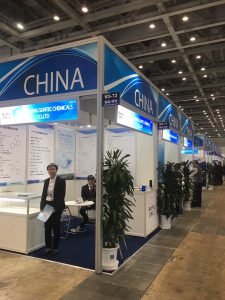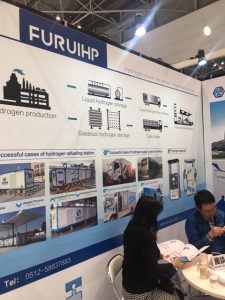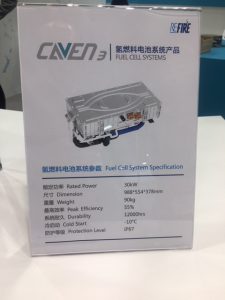Through much of the 1980s, China had been the dozing dragon the industrialized world could ignore as a giant, yet cheap low-tech goods manufacturing center.
Over the intervening short decades, China has morphed into a Star Wars era juggernaut: The world first saw Chinese manufacturing prowess with doubt, then incredulity and lingering suspicions as the country steadily made tech improvements. Now, the western economies are witnessing that the once oil-smeared Chinese manufacturing facilities are reborn as leading-edge tech giants for many modern gadgetry and services from smart phones to banking.
Come 2020, the Chinese would make forays into the century-old bastion of western technology: hydrogen cars.
On Feb. 28, 2018, I visited the annual Smart Energy Week exhibition in Tokyo. It’s an event for materials and parts and components for renewable energy — solar, wind, geothermal and hydro power — as well as fuel cell (hydrogen), batteries, power grid technology and government policies. Representatives of material and components makers, software developers, and automobiles and other end-product manufactures.As many as 1,580 companies from 33 countries are exhibit, according to the show’s organizers.
The exhibit and speaker events at the Tokyo Big Sight messe halls looked more vibrant with more overseas exhibit and visitors than the Tokyo Motor Show held at the same venues a few months earlier that looked increasingly like a local exhibit. If more Chinese booths and visitors flooded the halls than a few years ago was not a surprise, large groups of visitors from India, Mongolia, many Southeast Asian and African countries added to multilateral colors to the event. Another conspicuous thing was a near total dearth of U.S. exhibitors and visitors. A female clerk of Canada’s Ballard told me, ‘Oh, Americans probably are not interested in spending money for new renewables technology. They may want to focus on EVs and other existing technologies.’

As the global news media attention seems to be zeroed in on EVs and battery technologies of Tesla and European automakers, Chinese suppliers of EV parts and components I interviewed at the exhibit said that their high time of the photovoltaic business will be over soon. No matter how much you make technological improvements, there’s a limit to PV panel’s electricity generation property, they argued. ‘You can cover the entire planet earth with PV panels but that’s not enough to satisfy global power needs unless you can store power in batteries and other methods,’ a marketing rep of a Shanghai-based company Refire told me.

In a shy of three years time, Chinese companies have acquired technologies to manufacture fuel cell components that convert hydrogen into electricity to power heating equipment, cars and other industrial products. How they got wind of their skills — Trump suspects industrial espionage for sure — aside, wha’s impressive is the velocity of Chinese R&D to emulate fuel cells, the most advanced of them known to have been developed by Toyota Motor Corp., Honda Motor Co. and their suppliers.
Refire is among dozens of Chinese manufacturers for fuel cell units and related devices. Furui Hydrogen, also based on Shanghai, manufactures hydrogen tanks that tolerate pressures of 70 mega pascal, the pressure level expected to become a global standard for hydrogen storage tanks large and small. ‘The Chinese R&D speed is very fast; they are intent about catching up to global levels for hydrogen infrastructure technology,’ an engineer of Iwatani Corp. of Japan, a top gas and hydrogen maker, told me.

